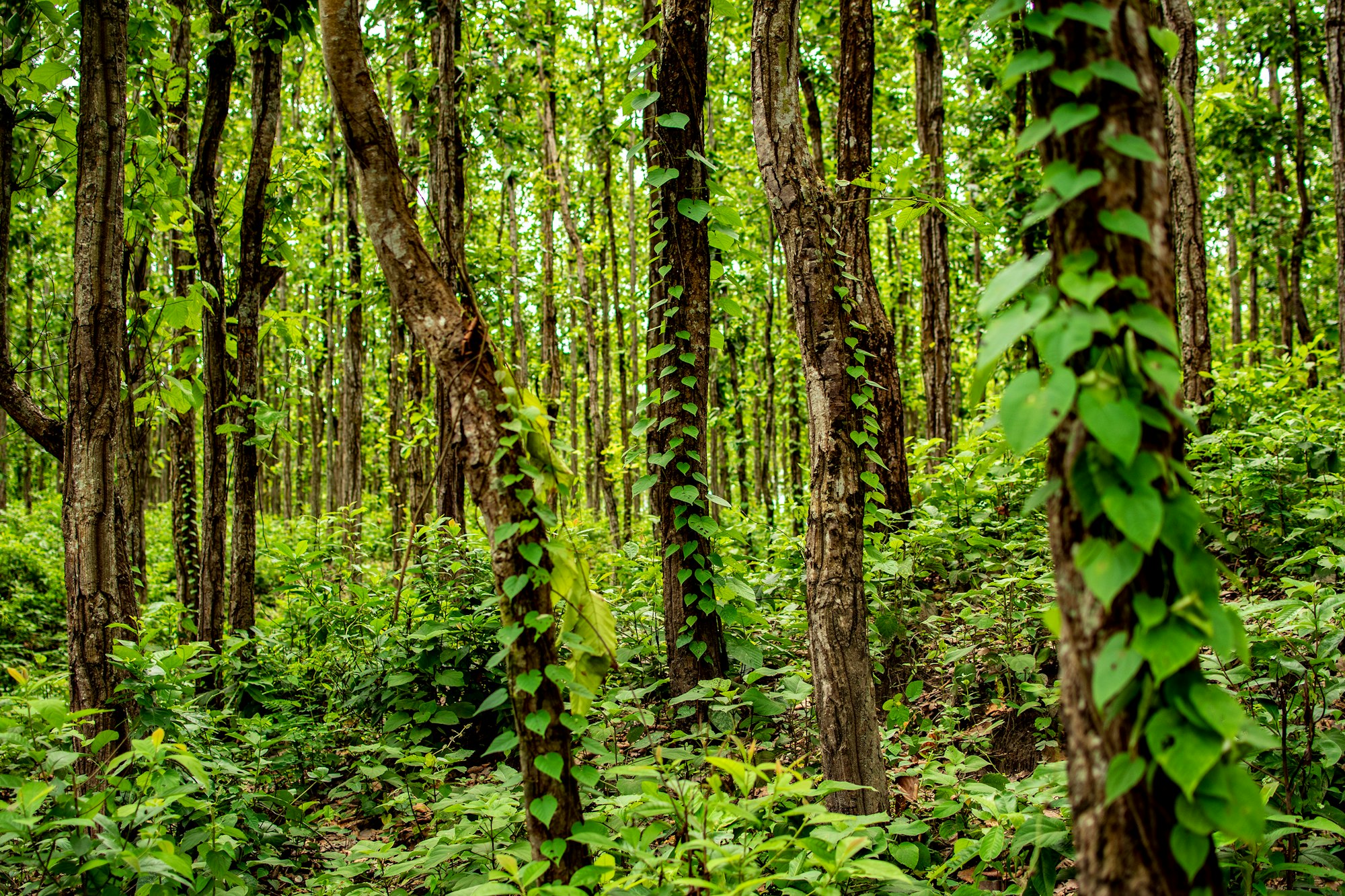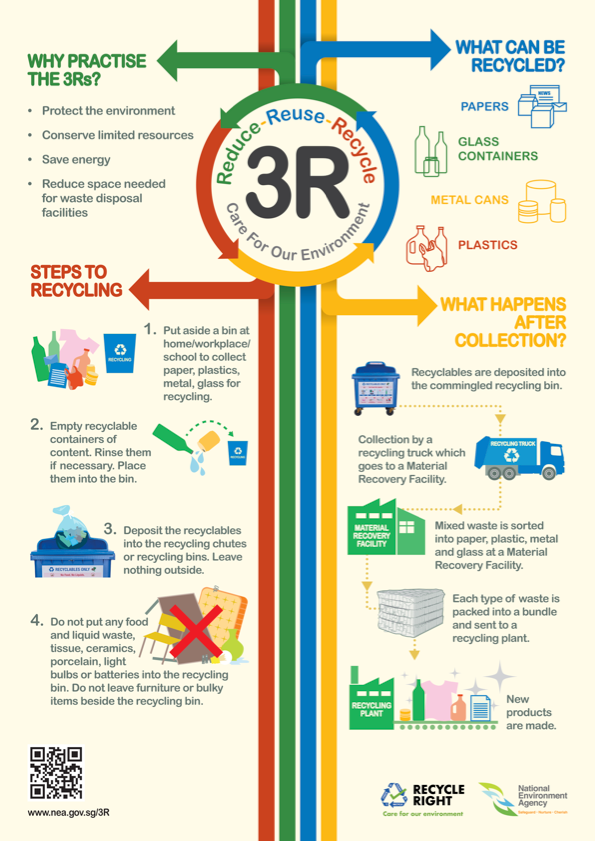Towards a sustainable Singapore: how the youth can make a difference

Originally submitted on 4 February 2022 for the National Writing Competition on “Towards a Sustainable Singapore: How Youth Can Make a Difference?” by the NYAA Council and the SPH Media Trust.
A particularly poignant criticism of the modern industrialised world will invariably include its ecological and social impacts. Excess is the paradigm that drives the modern capitalistic society in general. Starting during the Victorian age, that one's wealth and status is defined through their vast amounts of possessions came into vogue throughout not only the upper class, but also to the common people in society. While such a consumerist attitude fuelled by the Industrial Revolution never left the consciousness of society, counter-movements arose to challenge that status quo. To unhinge society off its wastefulness, there seemed to be two main approaches that ascended into the mainstream amongst youths in recent years: the environmental movement and the minimalist (simple living) movement. The existence of a multitude of other movements or ideologies—including the anti-consumerists and the conservationists—cannot be denied nor ignored. The prevalence of consumerism and the market's adherence thereof, if unmitigated, will inexorably impoverish natural resources and disfigure the human psyche irreparably. Taking the statement prior as an antithesis to sustainability, one can conclude, as such, that the term at least includes the requirement that all life on earth—including humans—will be able to flourish indefinitely.
The movements mentioned thereof tend to focus on the individual. Various slogans adorning the Singaporean daily lives (though many appear to be universal in nature) including the 3Rs (Reduce, Reuse, Recycle) have been mainly targeted at individual behaviour. Fleeting trends seemingly with the objective of reducing certain wastes such as plastic straws were not as far-reaching or sustainable (pun intended) as desired. The minimalist movement and the Marie Kondo movement may seem to be more successful, but still inhabit a small part of the collective consciousness. There seems to exist a difficulty in instilling a culture that defeats unsustainability. It is also imperative to note that the lack of unsustainability does not imply the existence of sustainability. As such, the pruning of the roots of unsustainability is one required in order to move onto a sustainable state in Singapore.

A way to frame the issues plaguing the weeding out of unsustainability will take its inspiration from The Techno-Human Condition. The idea of a Level I, Level II, and Level III approach, each addressing the thing, systems, and worldview respectively, might be beneficial in the understanding of movements, behaviour, and policy. It is argued, then, that a problem-solving endeavour ought to consider the level at which it is being solved at. While a Level III approach in shifting a world view much like Kuhn's ideas of a paradigm-shift is very much ideal, the reality of a somewhat rigid bureaucratic system in place within most nations, especially Singapore, prevent such an undertaking from taking place. A shift in world view changes the identity of the self, the culture one is in, and the nation one is in, culminating in a change in the identity of a collective world. What follows is a behavioural change that remains and is unwavering in its commitment to uphold that identity. It is, after all, a core tenet in the formation of habits in one's life. A Level II change in systems then becomes a somewhat satisfactory alternative, and has been done in Singapore in the form of institutional changes and creations that aim to enact a sustainability movement on a macro scale.
The Singaporean story on sustainability from these institutions is filled to the brim with optimistic statements on its current position amongst other nations and the story of its colossal jump from an unsanitary, disorganised state in the 1960s into the global powerhouse that it is now. However, this author's day-to-day life observations do not corroborate this fact much. This, along with various technological and popular scientific discoveries that are purported to lessen the burden on the world, shifts the responsibility away towards the government or some upcoming brilliant innovator claiming to be able to fix it all, and allows one to arrogate the pride and optimism associated with a positive news on sustainability. Even then, the systemic issues plaguing the modern free market capitalistic society rob the actions thereof of moral content. As such, this pattern of consumption: having instead of being, is heavily ingrained deeply into society's historical experience.

Insofar as the youths are concerned, a strong majority do not command the core values needed to shift their behaviours permanently. While market forces can enact a Level I change—a notable example being the charging for plastic bags in supermarkets—it is still insufficient on a macro scale. Giddens's structuration theory, closely related to Heidegger's model for individual human beings, seem to explain this phenomenon satisfactorily: that meaningful action is based on the accumulation of historical experience and cultural norms, as opposed to the thought process occurring through the representation of the world in the mind. While the rigidity and persistence of certain behaviours and cultures can be explained thereof, the impetus for the opposite can also be implied. Within the model, the structure of rules and resources that are universal to a particular society can be divided into three distinct parts: signification, legitimation, and domination. The structure of signification is straightforward and is usually taken for granted, as it points to the rules that govern and give meaning to the world, a set of beliefs. For the structures of legitimation and domination, they point towards societal norms and the ability to collect resources and tools to perform a task.
A major shift as hinted in the preceding paragraphs is on the youths' tendency to be rather more upfront about the mental well-being of society. Knowing that certain mindset changes were motivated by a disdain of the modern addictions to consumption and the lack of satisfaction thereof, one can attempt to design based on this changes to further the obfuscation and destruction of the structure underlying this concept of having. While complete structural change seems to be an insurmountable feat, the least one could do is something akin to therapy: to acknowledge the unsustainable lifestyle one has. A change in the structure is one that can be kick-started by this generation before the consequences of unsustainability catch up, forcing their hands upon the continuing status quo. By then, the culture of consumerism will definitely change, though the surrounding conditions will not be and never be what it used to be before. Youths can enact change by highlighting issues surrounding the current modern system and inducing change, sometimes unnoticeable one, through careful and deliberate design of objects, institutions, and paradigms to shift the identity of this generation into one that is sustainable.
Sources
Allenby, Braden R., and Daniel Sarewitz. The Techno-Human Condition. MIT Press, April 22, 2011. isbn: 978-0-262-29440-9. Google Books: I6YysPEgyYIC.
Clear, James. Atomic Habits: An Easy & Proven Way to Build Good Habits & Break Bad Ones. Penguin, 2018.
Ehrenfeld, John R. Sustainability by Design: A Subversive Strategy for Transforming Our Consumer Culture. Yale University Press, December 31, 2017. isbn: 978-0-300-14280- 8, accessed February 3, 2022. https://doi.org/10.12987/9780300142808. https://www.degruyter.com/document/doi/10.12987/9780300142808/html.
Giddens, Anthony. The Constitution of Society: Outline of the Theory of Structuration. Vol. 349. Univ of California Press, 1986.
Heilbroner, Robert. “Does Socialism Have a Future?” Nation 257, no. 9 (1993): 312–316. “How to Reduce, Reuse and Recycle (in That Order).” Accessed February 3, 2022. http://www.gov.sg/article/how-to-practise-the-3rs.
Meissner, Miriam. “Against Accumulation: Lifestyle Minimalism, de-Growth and the Present Post-Ecological Condition.” Journal of Cultural Economy 12, no. 3 (May 4, 2019): 185– 200. issn: 1753-0350, accessed February 3, 2022. https://doi.org/10.1080/17530350. 2019.1570962.
Shamsul Haque, M. “Governance and Bureaucracy in Singapore: Contemporary Reforms and Implications.” International Political Science Review 25, no. 2 (2004): 227–240.
“Singapore Green Plan 2030.” Accessed February 4, 2022. https://www.greenplan.gov.sg/splash.
“Towards Singapore’s Sustainability - Key Tenets of Our Approach to Sustainable Development.” CIRSD. Accessed February 4, 2022. http://www.cirsd.org/en/horizons/horizons-summer-2019-issue-no-14/towards-singapores-sustainability-key-tenets-of-our-approach-to-sustainable-development.